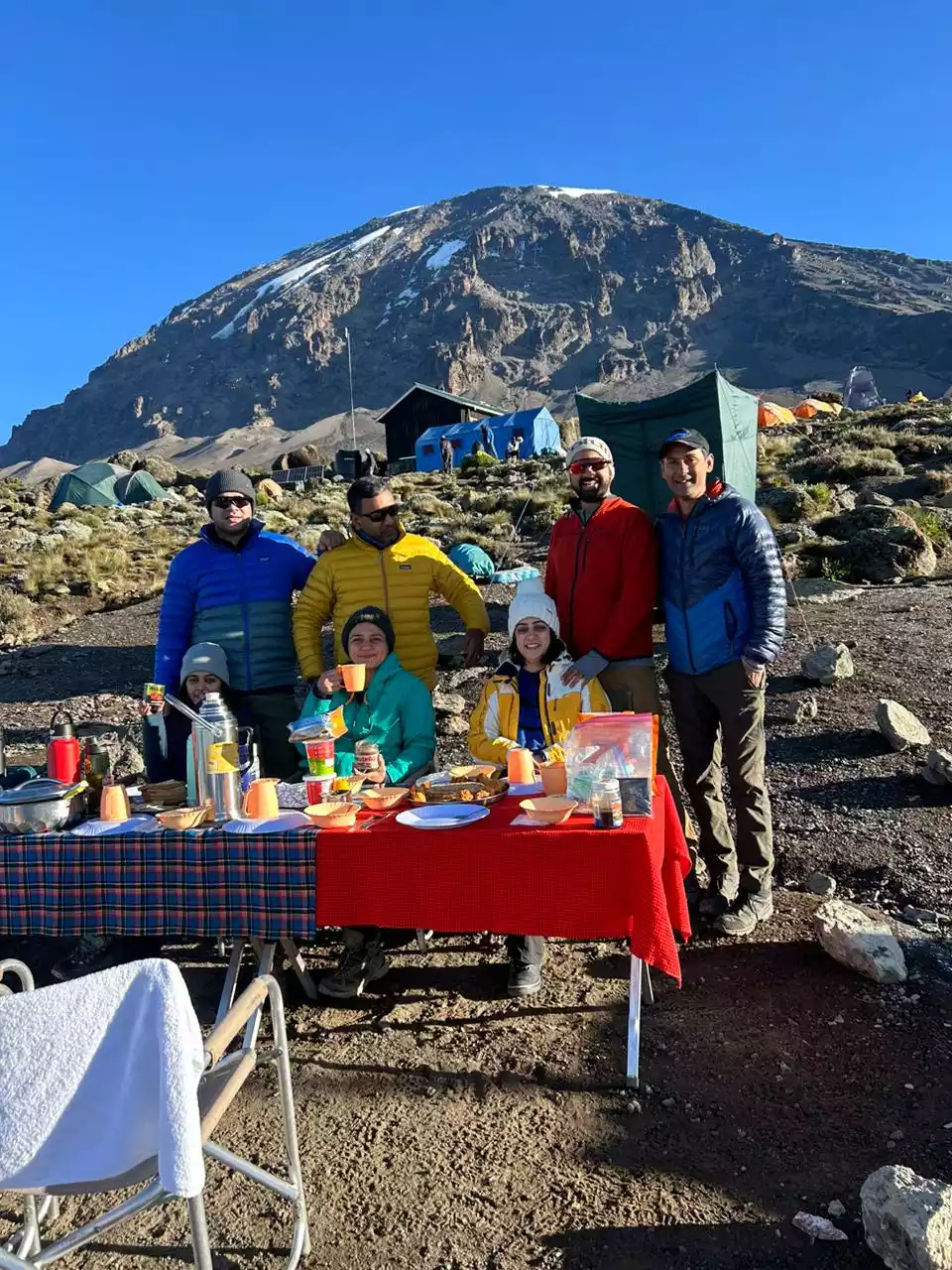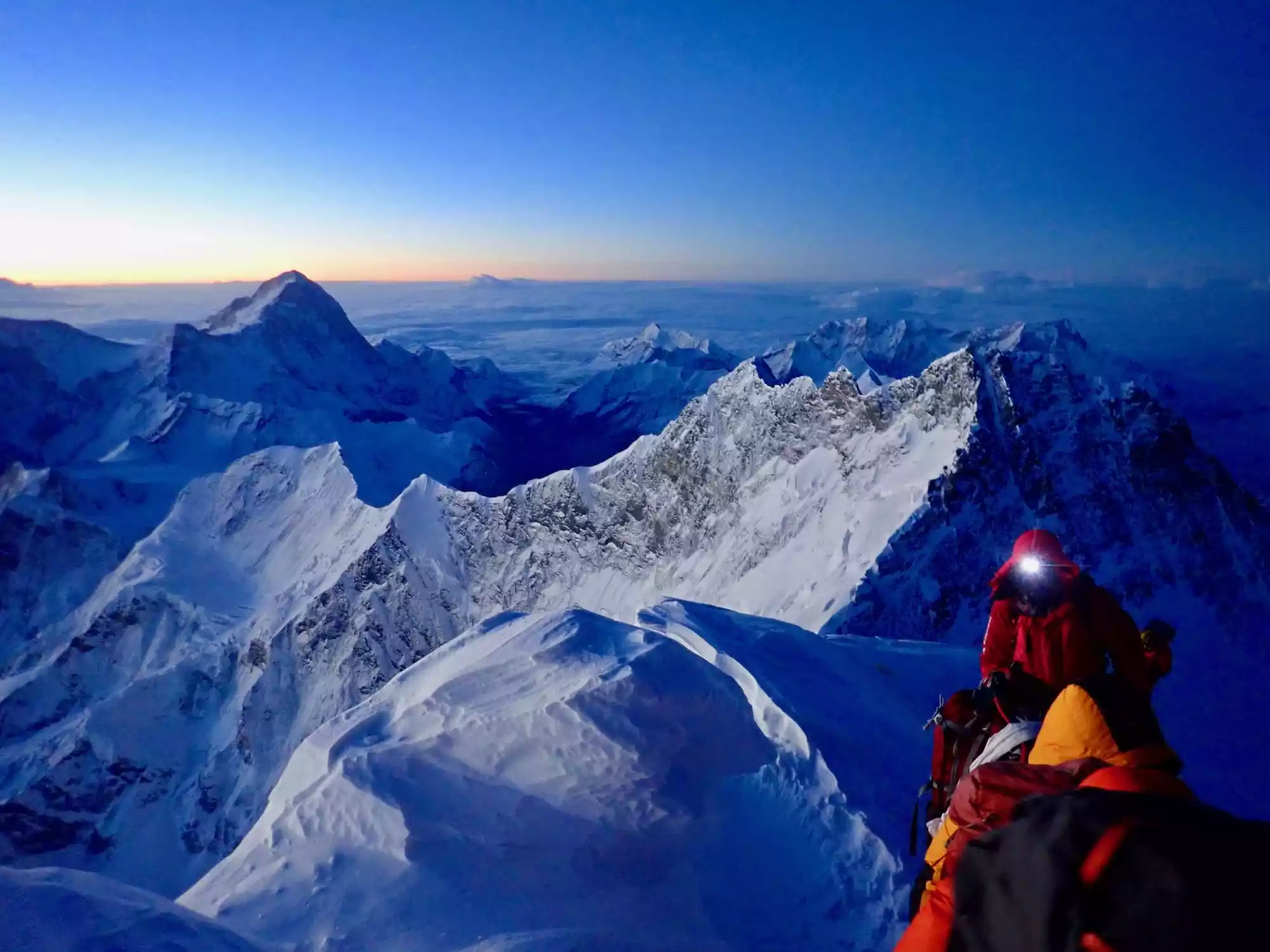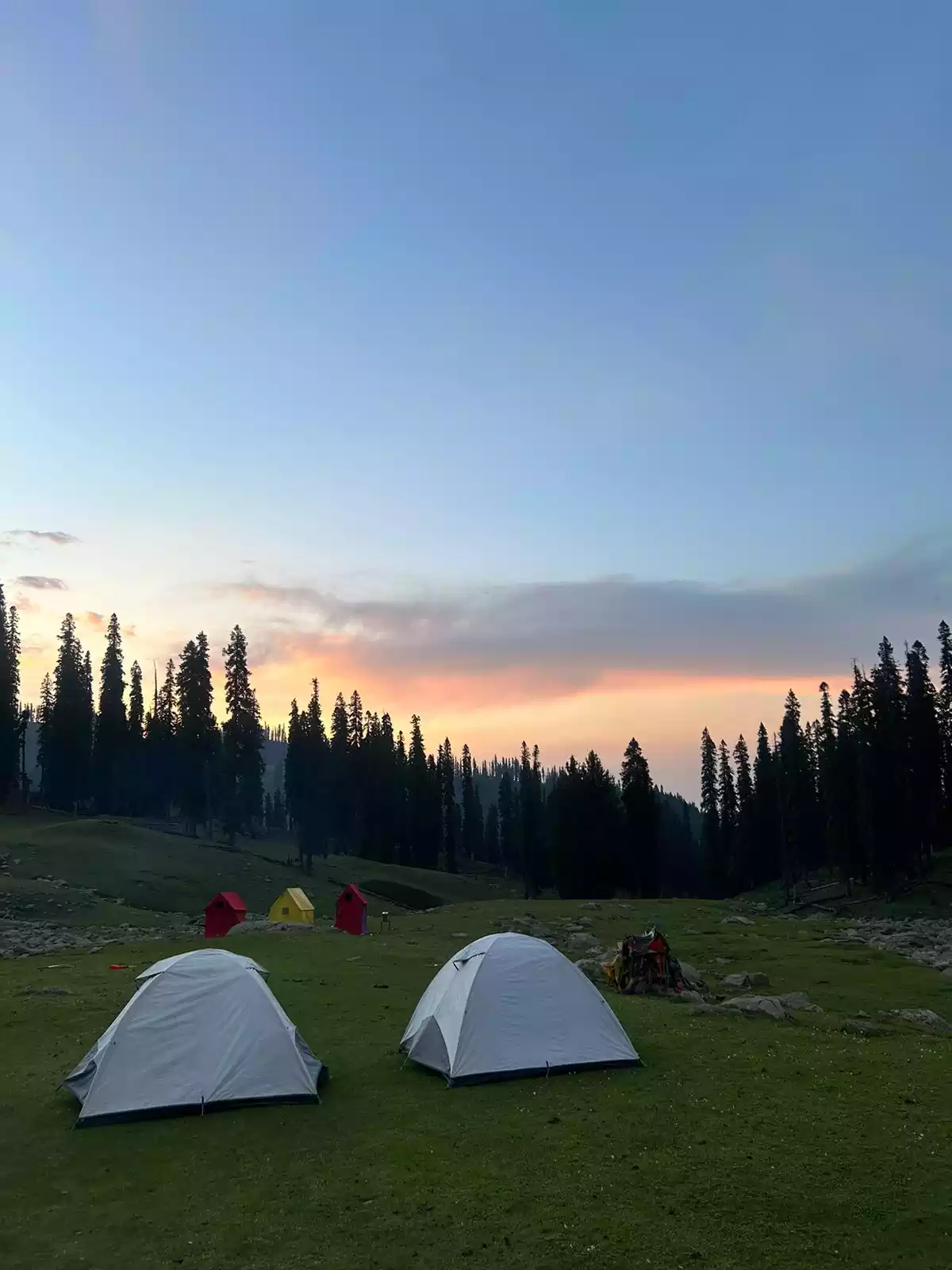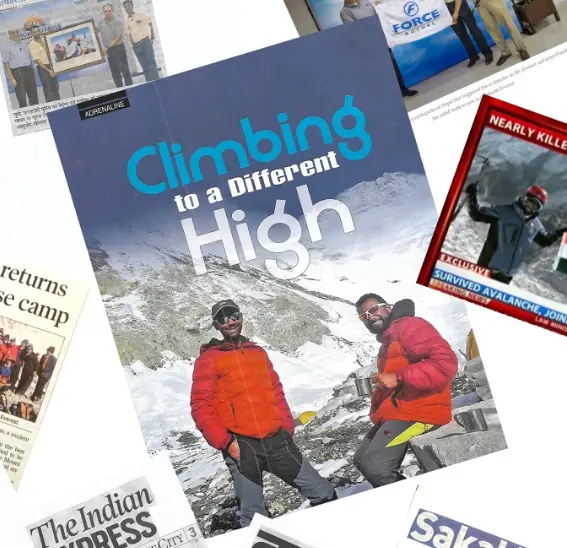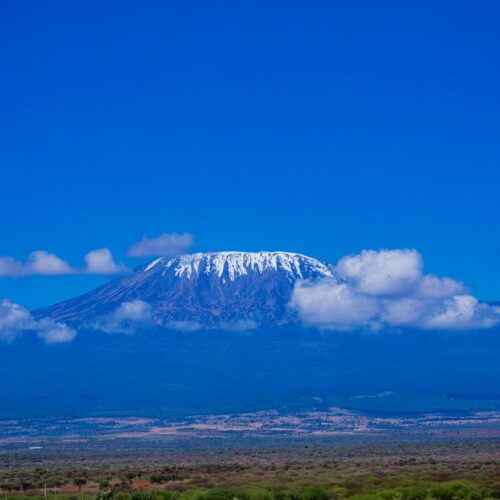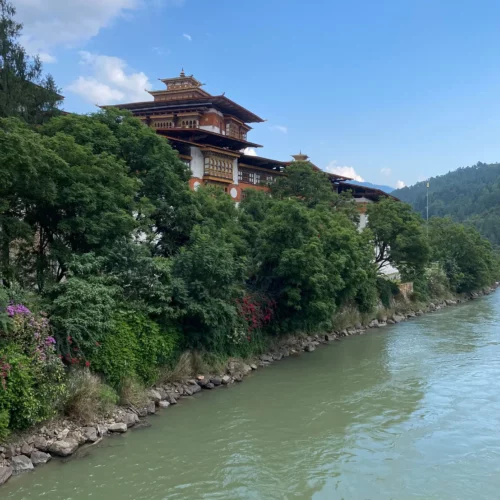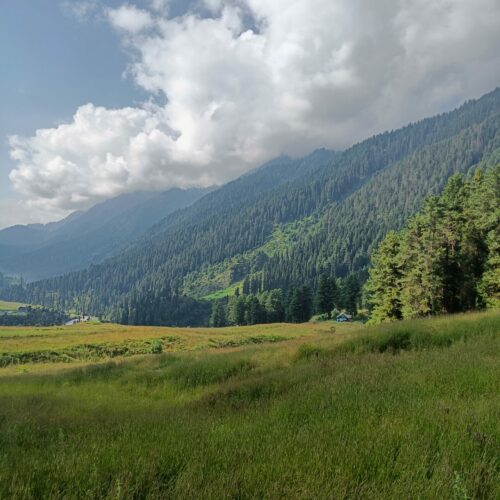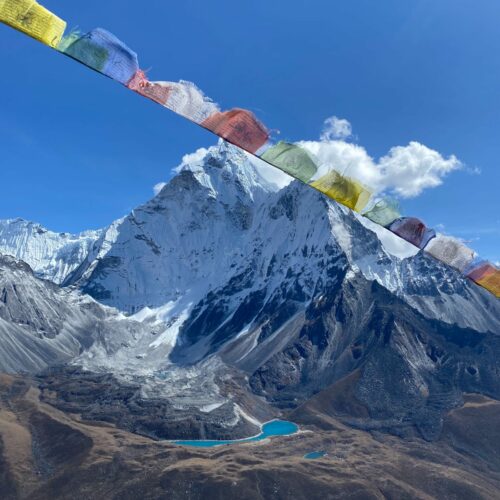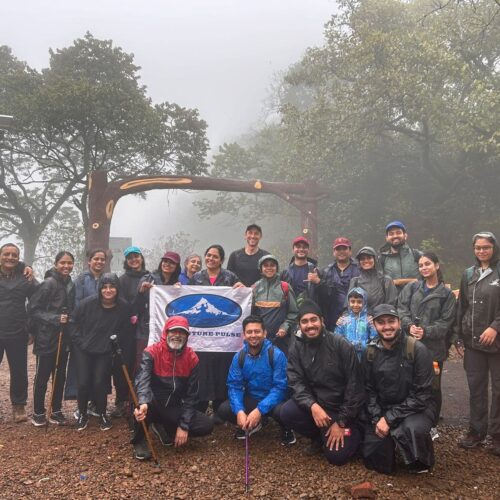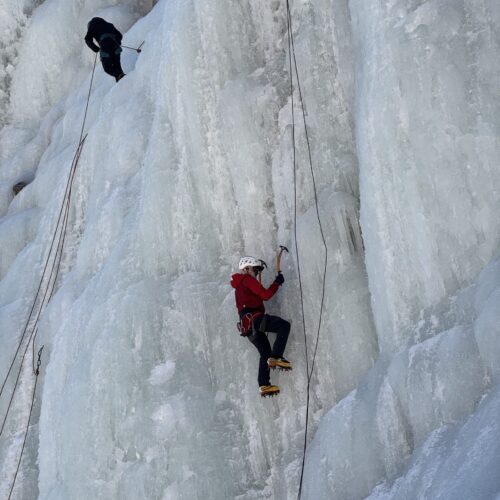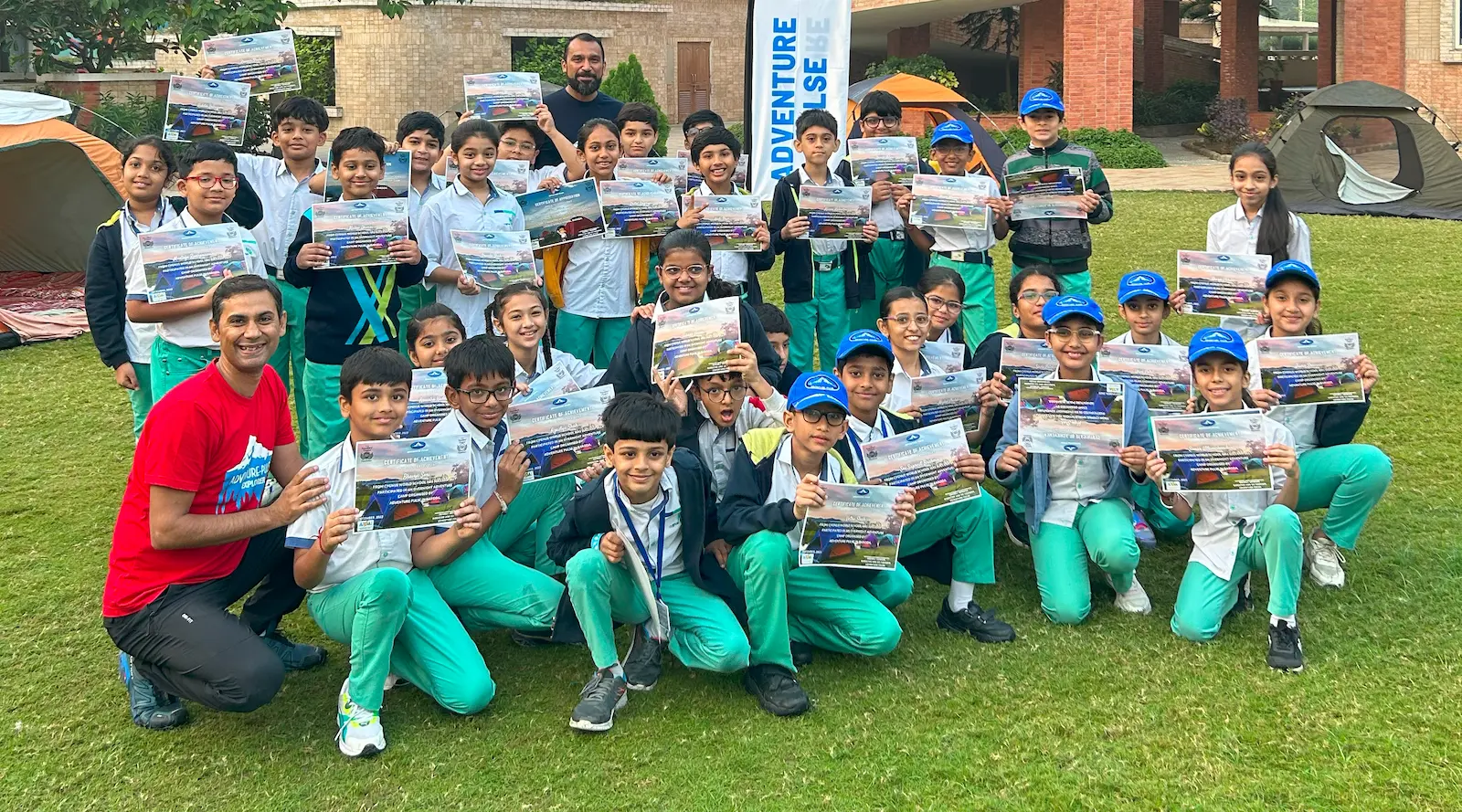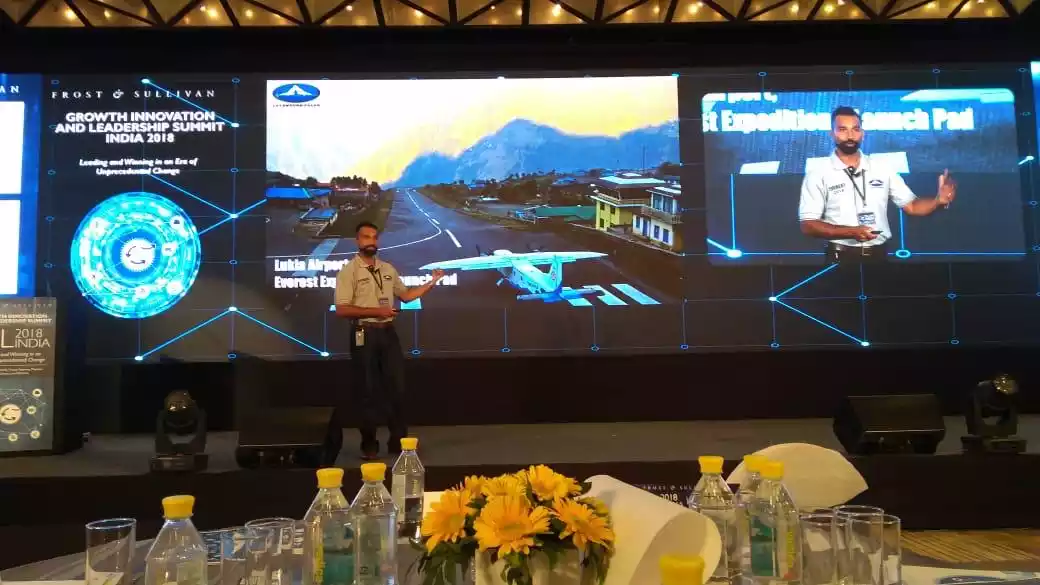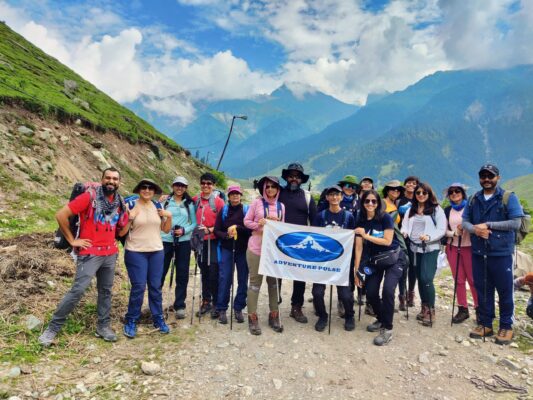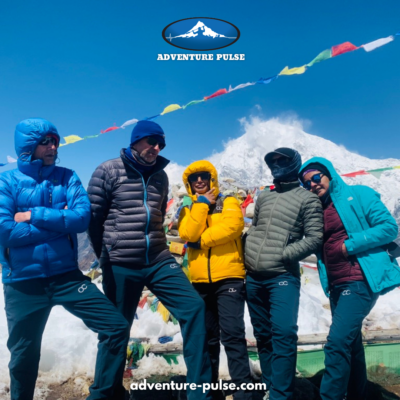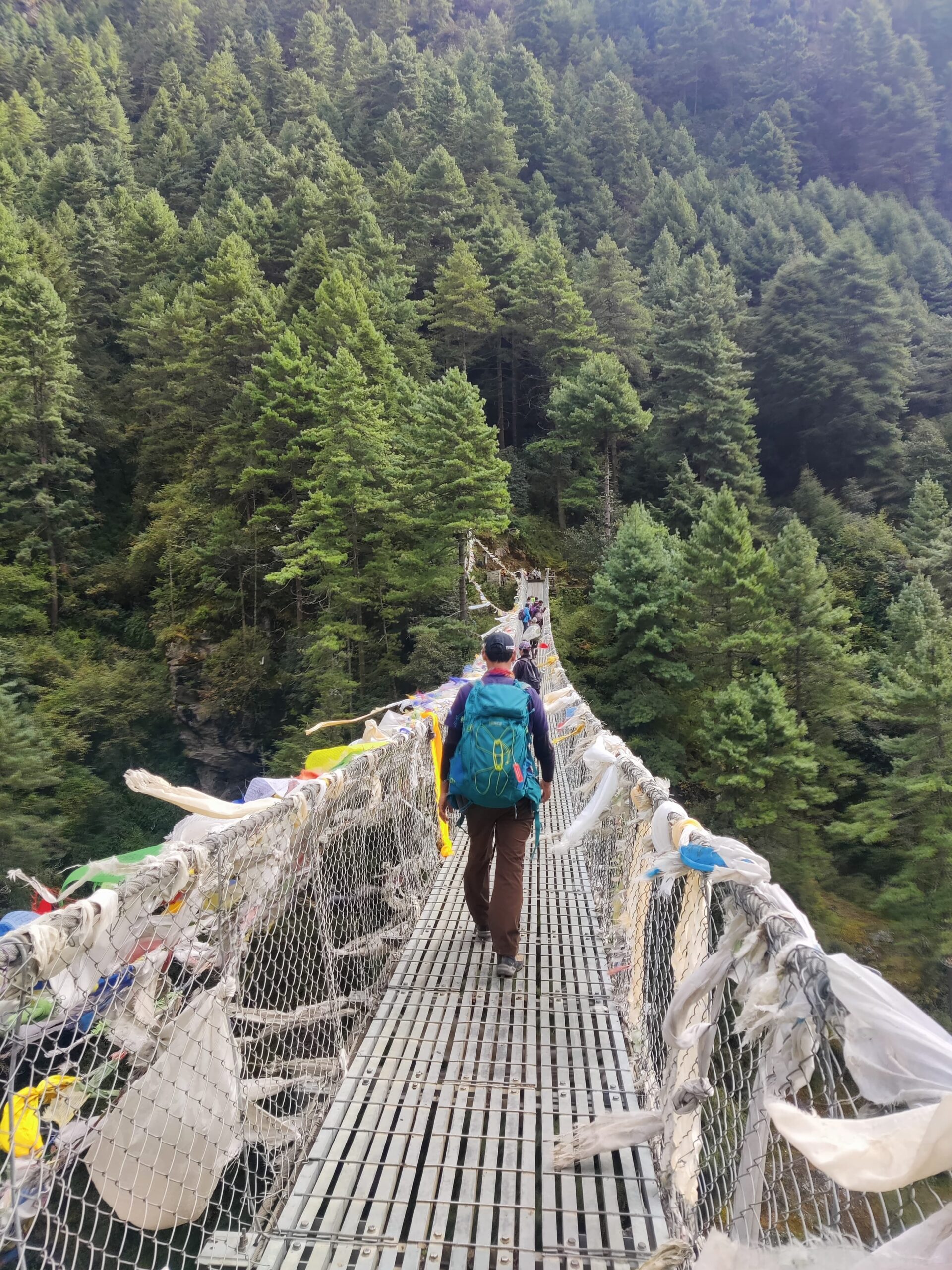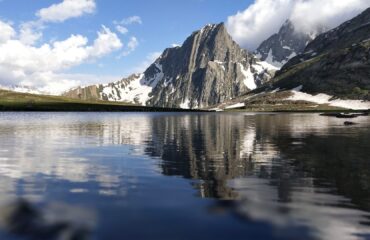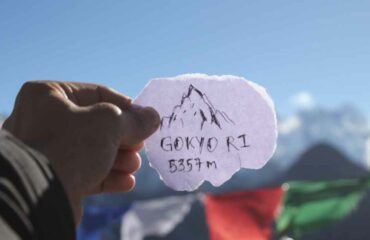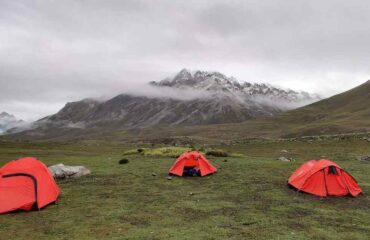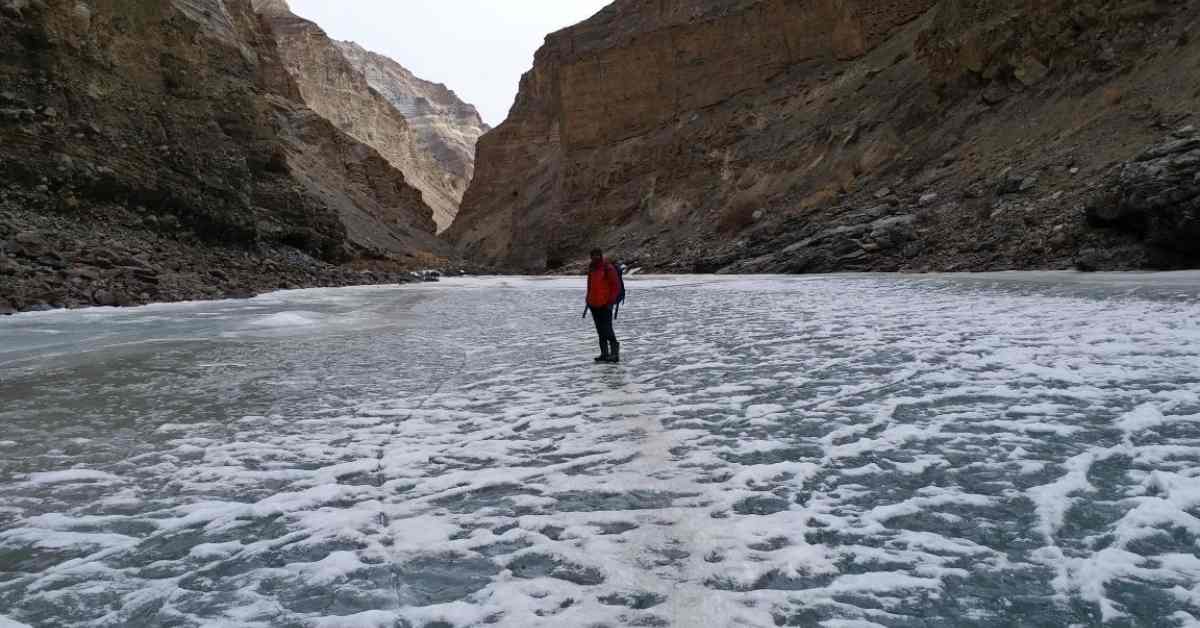
The Chadar Trek or the Frozen River Trek is the most popular winter trek in India. A 09-day trek walking on the frozen river of Zanskar and temperatures as low as -30C. Taking place in the beautiful land of Ladakh, the Chadar trek is truly an experience of a lifetime. In winter, as the temperature plummets, a layer of ice develops on the river Zanskar. This layer of ice acts as a highway connecting Leh with the Zaskar Valley and for hundreds of years, Zanskari people have used the ice to travel. The flat ice saved them time as it cuts down the trek up and down the passes. Nowadays, with a road network being constructed, the ice is used as a trek taking people from the village of Chilling to Nerak in the middle of winter.
Winter in Ladakh is truly a mesmerizing spectacle. With light snow covering the arid landscape, Ladakh transforms into a new place where the day starts when the sun is at its zenith. Leh Market becomes the main hangout spot with people relaxing on the benches taking in the sun. The few restaurants that are open act as garlic soup and Timok dispensers.
How cold is it on the Chadar Trek?
Very Simply, extremely cold. The temperature while on the Chadar can plummet as low as -30C. As the river flows at the bottom of the valley the temperature is the lowest there. A slight breeze moving downstream adds to the wind chill as well. Even though you only cover around 50 kilometres, the cold makes the Chadar Trek one of the harder treks on our roster.
While on the trek you’ll have to wear close to 5 layers of clothes and at night, hot water bottles are the only respite from the cold. As you walk during the day, your body heats up (alas just a little) and stopping even for a sip of water seems like a chore. You will be shivering most of the time and everything not near your body will freeze, even cold creams. Devices last a mere 5 minutes in the cold and the act of taking pictures will remind you of the Kodak days.
After all this, you might be wondering as to why we love the Chadar Trek? It’s because we’re crazy, but aren’t we all?
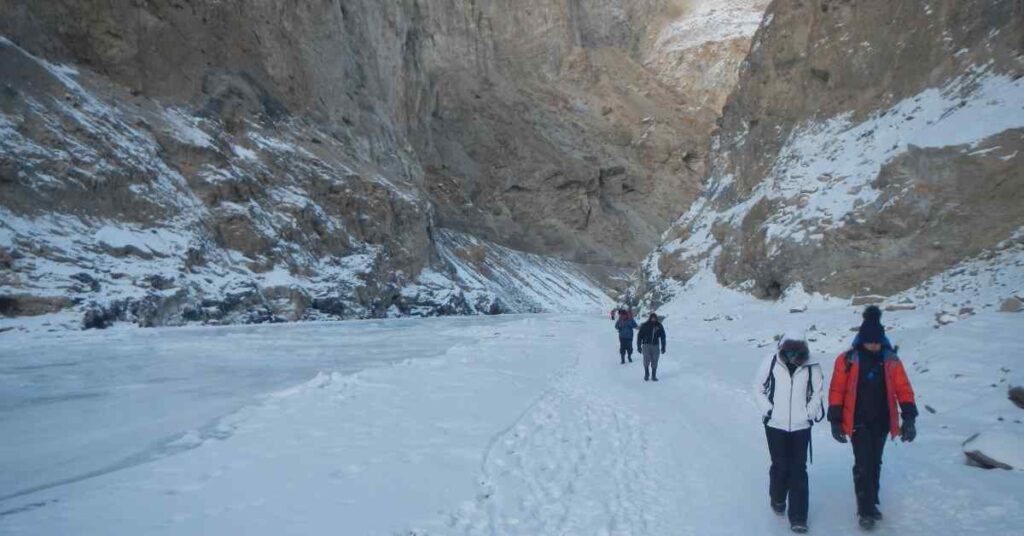
How do you expect to survive the cold?
As mentioned above, the best way to survive the cold is the technique of layering. In short, Layering is several clothing items worn in sequence for protection. While on the trek, your superhero costume is going to comprise of a base layer or thermal, a regular t-shirt, one or two fleece jackets, a down jacket and a windcheater. All this ensure that the precious heat your body produces doesn’t get lost to the air. The clothing acts as an insulator from the cold. Chemical heat/warm packs can be used to keep your extremities warm. If the sun is out, you’re in luck, the temperatures will be relatively warmer (maybe a couple of degrees warmer).
We at Adventure-Pulse provide dual sleeping bags to sleep in at night. These sleeping bags come with an inner liner that fits into a waterproof outer layer. These are similar to the ones used by the army at their High-Altitude outposts. Additionally, our Alpine tents work better at insulating and wind protection as they are made from canvas as opposed to polyester or nylon.
We encourage clients to also carry hot water bags. These rubber bags will be filled with hot water at night and can be strategically placed to keep you warm.
Nibbling on chocolates and dry fruits provided your body with much needed sugar that it instantly converts into heat. We encourage clients to carry sweets and chocolate with the most sugar as it is what will keep you warm.
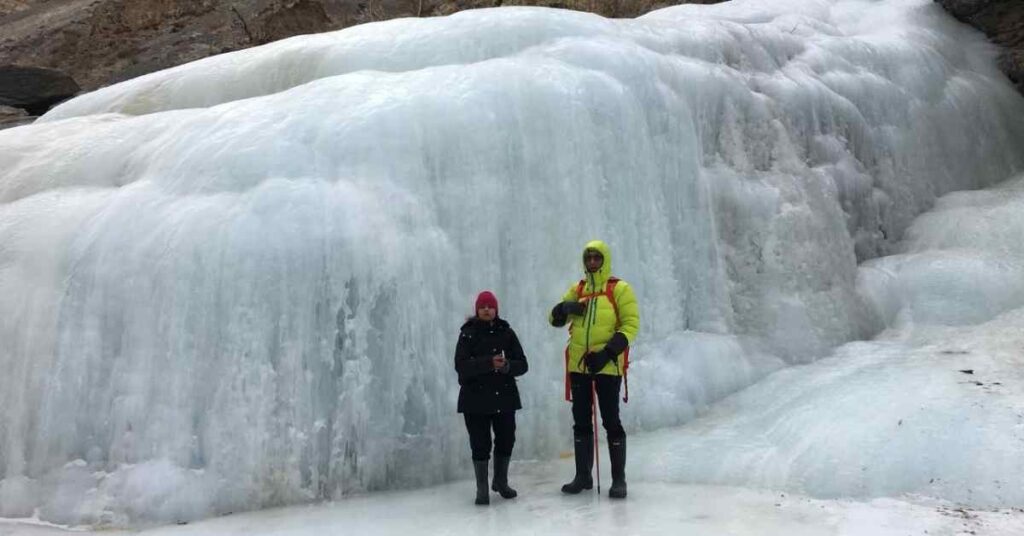
What’s the itinerary like?
You can find the full itinerary here.
The trek is a total of 9 days and 8 nights in Ladakh. As mandated by the Leh Authorities, as you land in Leh, you’ll be expected to spend 3 nights in Leh before you head off for the Chadar Trek. This is so that your body has enough time to acclimatize to the altitude. The first day is spent in the hotel and maybe a hike to the Leh Market in the evening. Day two is when we’ll hike up to Shanti Stupa and Leh Palace.
On the third day, Adventure-Pulse representatives will escort you for the mandatory medical check-up and insurance purchase. Here the local doctor will check your oxygen saturation, blood pressure and pulse. Only on their approval will you be able to head to the Chadar. Most people meet the requirement as after three days, your body can adjust to the altitude.
After you’ve cleared the medical, the next day is when we’ll head off to the Chadar. You will spend 4 nights on the Chadar, slowly journeying to Nerak and back.
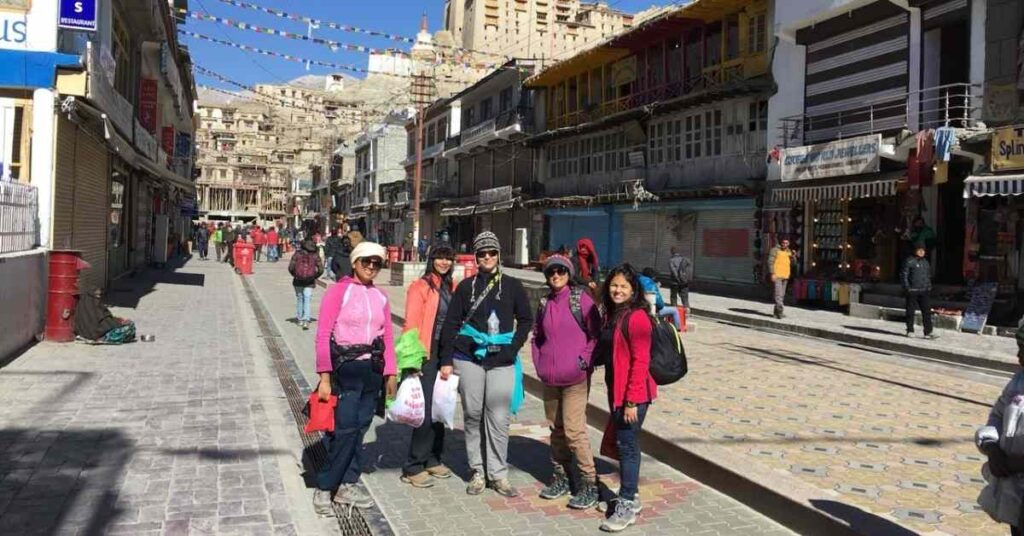
Where will I be staying?
The night on Chadar Trek will be spent in Alpine Canvas Tents on a double sharing basis. The Canvas tents will be lined with 3 layers of foam on which your sleeping bag will be placed. As written above, the sleeping bags will be dual-layered with a polyester fill. There are specific camping sites on the bank of the river, which the Leh District Administration has designated. These locations historically were used by Zanskari Traders as they have caves that protected them against the elements. These caves are still used by some of the porters and can be explored when you reach the campsite.
In Leh, you will spend 4 nights in a comfortable hotel near Leh market. The hotel will be fully heated and equipped with a water supply. We encourage our guests to use minimal water as Ladakh is a cold dessert.
What will I be carrying while on the trek?
For a list of items to carry on the trek, we would recommend going through this list.
While trekking, your personal bags with most of your items will be loaded on sledges in the morning. You will be able to access this bag only once we reach the next campsite. Most of the clothes and stuff that you don’t need while trekking should be packed into this main bag. A good duffel bag (80-100 litres) or a rucksack (50-70 litres) can be used as your ‘main’ bag. If you have some clothes or miscellaneous items that you do not wish to take on the trek, they can be left at the hotel and we’ll ensure you get them at the end of the trek.
On your back, you’ll have to carry a small daypack (15-20 litres) with water and your packed lunch. This will act as your ‘secondary’ bag. You will need to carry your daypack and we would recommend keeping it as light as possible.
What kind of food will be provided on the trek?
On the trek, our staff will be carrying a kitchen tent with all the ration. They will accompany you for the entire duration of the trek.
As you wake up in the morning, you will be provided with hot coffee or tea with some biscuits. It is important to stay hydrated in the mountains and the best way to consume liquids is in the form of hot beverages. Tea and Coffee will also be available for breakfast and in the evenings.
For Breakfast, you can expect parathas, bread and jam, poha, oats and noodles. We will try our best to provide an assortment of food and avoid repetition. Hot lunch will be provided at a predestined rest stop.
The Dinner Menu will include items such as fried rice, Hakka noodles, biryani, Dal-Roti-Sabji-Rice among others. We will also provide soup and dessert before each supper.
What is the strength of the support staff on the Chadar Trek?
Each group will have a lead guide and numerous assistant guides (depending on the strength of the group). The guide’s responsibility is to keep you safe. They will make sure that the group is following the right route and at the right pace. They will also be your Single Point of Contact with the staff. The guide will be from the area and will also have access to the necessary paperwork. In the case of an emergency, they will also organize the necessary evacuations. The assistant guide will assist the guide and will either walk behind the group and/or in the centre. They will make sure that no person will be trekking alone and that the group does not spread out too thin.
If you wish, we can also hire a dedicated assistant guide who will walk with you the entire time. They will make sure that you follow the right pace and will be able to check on you on a more personal basis.
Along with the guides, you will also be accompanied by a Cook, who will cook all the meals. If it’s a large group, there will also be a kitchen helper/s.
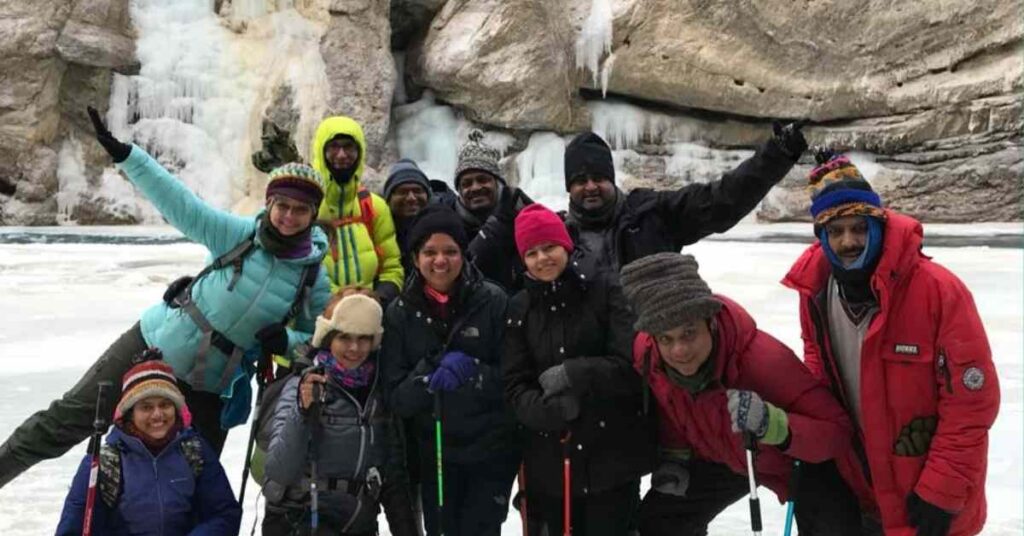
How do I get to Leh?
The easiest and only way into Ladakh in winter is to fly. There are daily flights from New Delhi and Mumbai to Leh. We would recommend booking a seat on the right of the aircraft while landing into Leh. Flying over the snow-capped mountains is the perfect way to start the trek of a lifetime.
How do I Prepare for the Chadar Trek?
Like most treks, a certain level of fitness is required. For a sample fitness plan, you can refer to our plan here. If you are a fit individual, dedicated training for 15-20 days should be more than enough. You can contact us at [email protected] and we’ll be happy to help you draft a fitness plan for your needs. A large portion of trekking is the mental fortitude and your ability to push yourself regardless of your physical fitness.

